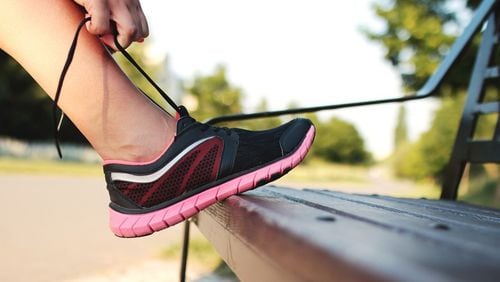Investing in the right pair of shoes can be a crucial part of building up your running routine. The wrong pair can hurt muscles, cause blisters and slow down an otherwise healthy competitor, and the right pair can add endurance and comfort to any long run. Here are a few things to consider when buying your next pair of running shoes.
Pick the shopping time strategically.
Busy feet tend to swell over the course of a long day, so the sneakers that fit when shoppers stop in at 9 a.m. may feel too snug by their after-work sweat sessions. "Your feet start swelling in the morning and they don't stop until about 4 p.m. That's as big as they're going to get, so always buy your shoes in the evening," Tish Borgan of Running Room told Runner's World.
Don't run away with your new shoes without running around in your new shoes.
Don't feel self-conscious running around the store in a few pairs of new kicks to see how they feel. According to Women's Health, a quick lap in the desired pair can help shoppers tell if a shoe is truly right for them.
Look for shoes that are made specifically for running.
All sneakers are not created equal. According to Active.com, shoes made specifically for running are designed to handle the shock of 2.5 times your body weight. This kind of support protects your body from the stress inflicted in each stride, as running lends a repeated impact that differs from other activities.
Leave some wiggle room.
Even if a shoe seems to fit perfectly at the first try-on, for maximum comfort shoppers should look for a fit a bit bigger. SELF suggested that runners buy shoes that leave a half-inch (or a thumbnail's worth) of wiggle room between the end of the toe and the end of the shoe. "Pressure on the toe is never okay," said Kate Reese of Brooklyn Running Co. to the magazine. "If the fit is so constrictive that the toes can't move, you will most likely develop a blister during the course of the run. Any friction will certainly result in a blister that even the most technical sock can't combat."
Running shoes are for running, not running errands.
Wearing your running shoes around the house or to the grocery store may be convenient and comfortable, but this habit can change the way your shoes are worn in. According to Competitor.com, wearing running shoes for basic errands or chores can change the wear patterns on the outsoles, leaving you in need of a new pair of shoes much faster.
About the Author






